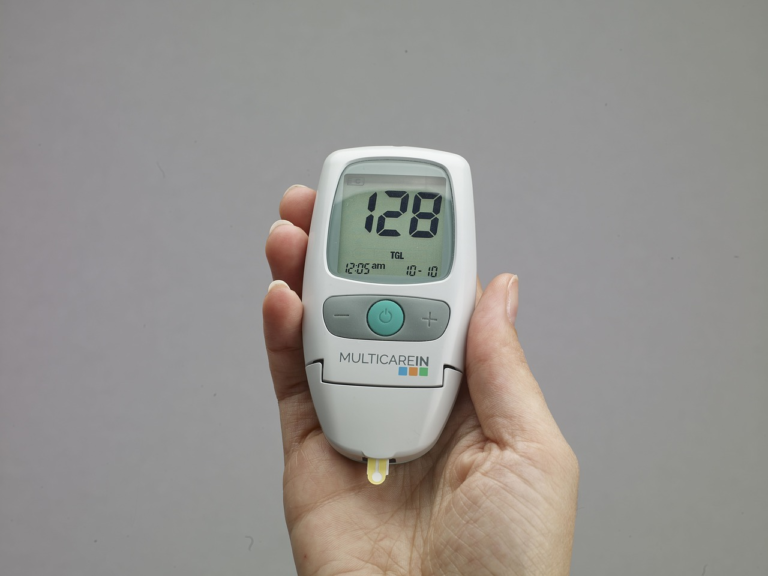Advocacy Efforts That are Improving Access to Diabetes Care Worldwide
#ez-toc-container {
background: #f9f9f9;
border: 1px solid #aaa;
border-radius: 4px;
-webkit-box-shadow: 0 1px 1px rgba(0, 0, 0, .05);
box-shadow: 0 1px 1px rgba(0, 0, 0, .05);
display: table;
margin-bottom: 1em;
padding: 10px 20px 10px 10px;
position: relative;
width: auto;
}
.ez-toc-container-direction {
direction: ltr;
}
.ez-toc-list-level-1 a{
font-weight:bold;
}
Table of Contents
1. Introduction: The Global Challenge of Diabetes Access
Diabetes has rapidly emerged as one of the most pressing health challenges of the 21st century. Affecting millions around the globe, this chronic disease poses significant public health and economic burdens on both developed and developing nations. Understanding the complexities of diabetes and ensuring access to adequate care and management are crucial steps towards mitigating its profound impact on global communities.
- Overview of the Diabetes Epidemic Worldwide
Diabetes is characterized by prolonged high blood sugar levels, primarily due to the body’s inability to produce or effectively use insulin. According to the International Diabetes Federation (IDF), as of 2021, approximately 537 million adults (20-79 years old) were living with diabetes worldwide. This number is projected to rise to 643 million by 2030 and 783 million by 2045. The escalating prevalence rates signal a global crisis that demands swift and effective interventions.
A multifaceted condition, diabetes requires comprehensive management strategies to prevent complications such as cardiovascular diseases, nerve damage, and kidney failure. Despite the alarming statistics, differences in healthcare systems, economic disparities, and public awareness contribute to uneven access to diabetes care worldwide.
- Importance of Access to Diabetes Care and Management
Access to diabetes care is pivotal to enhancing quality of life and reducing the burdens associated with the disease. Optimal diabetes management includes timely diagnosis, regular monitoring of blood glucose levels, access to insulin, oral medications, and diabetes education. When patients lack access to these essential components of care, they face a higher risk of complications, reduced life expectancy, and diminished quality of life.
The importance of diabetes care extends beyond individual health benefits. Communities and economies also benefit from effective diabetes interventions. On a macro level, managing diabetes reduces healthcare costs by decreasing the need for hospitalization and advanced medical procedures. Moreover, it enhances productivity and economic output by maintaining a healthy workforce.
However, disparities in access persist across different regions and demographics. Low- and middle-income countries often experience challenges such as limited healthcare infrastructure, lack of trained healthcare personnel, and financial constraints that hinder the provision and acquisition of necessary diabetes services.
- Introduction to Advocacy Efforts and Their Crucial Role in Improving Access
Addressing the global diabetes challenge requires collective action and a unified effort. This is where advocacy comes into play. Advocacy efforts are pivotal in raising awareness, shaping public policies, and ensuring that diabetes remains a priority in global health agendas. By amplifying the voices of those affected by diabetes, advocates work towards breaking down barriers to access and empowering individuals to seek the care they need.
- Raising Awareness
- Shaping Public Policies
- Enhancing Global Health Agendas
Advocates engage in various activities aimed at raising awareness about the realities of living with diabetes and the obstacles patients face. Through public campaigns, educational workshops, and media engagements, advocacy groups educate communities, policymakers, and stakeholders about the importance of diabetes care and prevention.
Additionally, advocacy plays a significant role in shaping public policies. By lobbying governments and engaging with international organizations, advocates push for policies that prioritize diabetes research, improve healthcare delivery systems, and increase access to affordable medications and technologies. The introduction of such policies can pave the way for systemic changes that benefit millions of individuals living with diabetes.
Furthermore, advocacy ensures that diabetes remains a focal point in global health agendas. Collaborative efforts with organizations such as the World Health Organization (WHO) and the United Nations (UN) help to align diabetes goals with broader health initiatives, ultimately driving progress in combating this global epidemic.
In conclusion, the global challenge of diabetes access is a multifaceted issue requiring immediate attention and action. With the number of individuals affected by diabetes steadily rising, the need for comprehensive, accessible, and affordable care has never been more critical. Through advocacy, the global community can address these challenges head-on, creating a healthier and more equitable future for all.

2. Key Advocacy Organizations and Their Impact
Advocacy plays a crucial role in raising awareness, informing policies, and fostering change at both regional and global levels. In the realm of international health, several organizations are at the forefront of advocacy efforts, driving significant change and positively impacting public health outcomes.
International Organizations Leading Advocacy Efforts
Several prominent international organizations are pivotal in advocating for better health policies, improved healthcare access, and enhanced public awareness about various health issues. Below are some of these key advocacy organizations:
- International Diabetes Federation (IDF)
The International Diabetes Federation is a global alliance of over 230 national diabetes associations in more than 160 countries. The IDF works to promote diabetes care, prevention, and a cure worldwide. Their advocacy efforts include raising awareness about diabetes, promoting healthy lifestyles, and encouraging universal healthcare coverage for all individuals with diabetes.
- World Health Organization (WHO)
The World Health Organization is a specialized agency of the United Nations responsible for international public health. WHO’s advocacy efforts focus on combating diseases, promoting healthier lifestyles, and addressing the social determinants of health. Their campaigns often emphasize the importance of policy and legislative action to promote global health.
- United Nations Children’s Fund (UNICEF)
UNICEF advocates globally for the protection of children’s rights, to help meet basic needs and expand opportunities for children to reach their full potential. UNICEF campaigns focus on health, nutrition, education, and child protection to improve the lives of children worldwide.
Partnerships and Collaborations that Amplify the Impact
To maximize their advocacy impact, these organizations often engage in strategic partnerships and collaborations. These partnerships help in pooling resources, extending reach, and enhancing the effectiveness of advocacy campaigns. Here are some notable examples:
- Global Health Partnerships
Organizations like the WHO and the Global Fund collaborate to tackle diseases such as HIV/AIDS, tuberculosis, and malaria. Their partnerships with national governments, NGOs, and private sector companies help in scaling up prevention and treatment efforts, ultimately saving millions of lives worldwide.
- Private-Public Collaborations
Partnerships between international organizations and the private sector, such as those between UNICEF and major corporations, help in bringing technological innovations and financial resources to advocacy campaigns. These collaborations enable broader outreach and enhance the sustainability of health initiatives.
- Non-Governmental Organizations (NGOs)
NGOs often collaborate with international bodies to push for policy changes and awareness campaigns. Such collaborations ensure local issues are given international attention, and global resources are utilized in the most effective manner at the grassroots level.
Case Studies of Successful Advocacy Campaigns and Their Outcomes
Examining successful advocacy campaigns provides invaluable insights into how these organizations drive change and achieve their goals. Below are a few case studies highlighting impactful advocacy efforts:
- Global Polio Eradication Campaign
The Global Polio Eradication Initiative (GPEI) led by WHO, Rotary International, CDC, and UNICEF has made significant strides in eradicating polio worldwide. This collaboration has resulted in a 99% reduction in polio cases globally, showcasing the profound impact of coordinated international advocacy efforts.
- World Diabetes Day
Initiated by the International Diabetes Federation and WHO, World Diabetes Day is celebrated every November 14th. The campaign seeks to raise global awareness of diabetes, and has successfully reached millions of people worldwide through events, educational resources, and media engagement, driving increased focus on diabetes prevention and care.
- Every Woman Every Child Initiative
Launched by the United Nations Secretary-General, this initiative advocates for the health of women, children, and adolescents worldwide. Through comprehensive partnerships, the initiative has mobilized billions in resources and driven policy changes that have improved maternal and child health outcomes, particularly in low-income countries.
These case studies reflect how strategic advocacy, enhanced by partnerships and collaboration, can drive significant global health improvements. By continuing to support and engage with such efforts, international organizations can further advance their mission to ensure a healthier world for all.

3. Innovations in Policy Advocacy for Diabetes Care
Diabetes care has seen significant advancements due in large part to innovative policy advocacy aimed at improving accessibility, affordability, and overall healthcare reforms. The active participation of governmental and non-governmental organizations has been pivotal in shaping policies that address the growing diabetes epidemic worldwide. This segment delves into the significant policy changes driven by advocacy efforts, the key roles played by various organizations, and an analytical overview of the impact these advocacies have had on the accessibility of diabetes care.
Policy Changes Driven by Advocacy Efforts
Advocacy efforts in diabetes care have led to several crucial policy changes that greatly influence both prevention and management. These efforts focus primarily on making medication affordable, implementing healthcare reforms, and progressing towards universal healthcare. Some notable policy changes include:
- Affordable Medication: Policies have been enacted to regulate the price of insulin and other essential diabetes medications. For example, advocacy efforts have led to the implementation of price caps in several states in the U.S. and broader measures proposed at federal levels.
- Healthcare Reforms: Health insurance reforms have been introduced to cover pre-existing conditions such as diabetes without exorbitant premiums, thus increasing the accessibility of necessary medical interventions for patients.
- Preventative Care Initiatives: Policies promoting early detection and preventative strategies, such as regular screening guidelines for high-risk individuals, have been implemented in various healthcare systems around the world.
Role of Governmental and Non-Governmental Organizations
Both governmental and non-governmental organizations play essential roles in advocating for and shaping diabetes policy. Their collaborative efforts ensure that the interests of diabetes patients are kept front and center in policy discussions.
- Governmental Organizations:
- Government agencies at all levels, such as health ministries or departments of health, are involved in formulating and implementing diabetes-related policies.
- Funding research into diabetes and supporting clinical trials for new treatment options is often spearheaded by national health institutes.
- Public health campaigns are frequently government-funded and executed to raise awareness and educate the populace on diabetes management and prevention.
- Non-Governmental Organizations (NGOs):
- NGOs like the American Diabetes Association (ADA) or the Diabetes UK play a critical role in lobbying for policy changes and funding research projects.
- These organizations often spearhead public education campaigns and provide valuable resources for both patients and healthcare professionals.
- They hold governments accountable by pushing for transparency and timely implementation of diabetes-related policies.
Impact of Policy Advocacy on Diabetes Care Accessibility
Policy advocacy has substantially impacted diabetes care accessibility, creating ripple effects throughout the healthcare systems of various nations.
- Increased Medication Access: By ensuring the affordability of insulin and essential medications, policy advocacy has made it easier for diabetes patients to manage their condition effectively without financial strain.
- Enhanced Insurance Coverage: The elimination of barriers such as denial of coverage for pre-existing conditions has allowed more patients to obtain the necessary treatments and medications.
- Broader Access to Preventative Services: Policies that emphasize preventative care enable individuals to receive early treatment interventions, thus reducing the long-term burden of diabetes on both patients and the healthcare system.
Ultimately, these advocacy-driven policy changes contribute to a more equitable healthcare environment where diabetes care is accessible to all, regardless of socio-economic status. As this momentum continues, the future of diabetes care looks increasingly optimistic with ongoing support, vigilance, and innovation in policy advocacy.
4. Community
Community-based advocacy initiatives have emerged as one of the most powerful forces in healthcare reform and access. Through grassroots movements and local advocacy efforts, communities worldwide are voicing concerns, driving change, and ensuring equitable healthcare access. This segment delves into the essence of these movements, the pivotal role of patient advocacy groups, and success stories of community-driven initiatives improving local access to care.
Examination of Grassroots Movements and Local Advocacy Efforts
Grassroots movements root themselves in local communities, building momentum and advocating for systemic change from the ground up. These movements often begin with individuals or small groups who share a common goal — improving their community’s access to healthcare services.
- Empowerment of Local Communities: By nurturing local leadership and fostering collaborations, grassroots movements empower communities to actively participate in their healthcare journey. Residents become health advocates, lobbying for resources and services tailored to their needs.
- Building Strong Networks: Grassroots efforts create strong networks that connect various stakeholders, including local healthcare providers, non-profit organizations, and government bodies. These networks facilitate the sharing of resources, information, and strategies to combat healthcare challenges.
- Direct Response to Local Health Challenges: Unlike top-down approaches, grassroots movements directly address specific local health issues, from rare diseases to general health inequalities. They adapt to the unique socio-economic and cultural context of the community, ensuring relevance and effectiveness.
Role of Patient Advocacy Groups in Spreading Awareness and Knowledge
Patient advocacy groups play an instrumental role in spreading awareness and enhancing knowledge about healthcare issues among communities. They serve as a bridge, connecting patients with the information and resources they need to navigate complex health systems.
- Education and Information Dissemination: These groups organize workshops, seminars, and informational campaigns to educate the public on various health issues, disease prevention methods, and treatment options. By demystifying complex healthcare topics, they empower patients to make informed decisions.
- Policy Advocacy: Patient advocacy groups work tirelessly to influence healthcare policy. By representing patient interests, they advocate for legislative changes that promote better access to healthcare services and protect patient rights.
- Support Networks for Patients: Beyond mere advocacy, these groups provide emotional support and guidance to patients and their families. They establish networks where individuals can share experiences, offering mutual support and encouragement.
Success Stories from Community-Driven Initiatives Improving Local Access to Care
The impact of community-driven initiatives on local healthcare access has been profound. Here, we highlight some remarkable success stories that illustrate the change possible through grassroots efforts and patient advocacy.
- The Navajo Health Equality Initiative: This initiative prioritized enhancing healthcare access for the Navajo Nation. By partnering with local healthcare providers and leveraging community insights, they established mobile clinics bringing essential healthcare services to remote areas, significantly reducing healthcare disparities.
- Southeast Asian Community Health Project: In several urban regions, the Southeast Asian Community Health Project addressed language barriers and cultural misconceptions about healthcare. Through bilingual health educators and culturally sensitive materials, they improved health literacy and access to services among Southeast Asian communities.
- Mothers Advocating Medical Marijuana for Autism: This grassroots movement highlighted the efficacy of medical marijuana in managing autism symptoms. Through persistent advocacy and public awareness campaigns, they successfully influenced state policies to allow medical use of cannabis for autism, benefiting numerous families.
- Diabetes Prevention and Management Program in Harlem: Community leaders in Harlem launched a diabetes prevention program focusing on nutrition and exercise. By integrating local resources like schools and community centers, the program effectively reduced diabetes incidence and improved disease management.
In conclusion, community-based advocacy initiatives continue to be transformative agents in the fight for equitable healthcare access. By leveraging grassroots movements, patient advocacy groups, and the collective power of communities, these initiatives address local healthcare challenges head-on. Their successes not only improve health outcomes but serve as blueprints for other communities striving for similar changes. As these efforts grow and evolve, they remind us of the tremendous power vested in collective community action to shape and redefine healthcare landscapes worldwide.






